Edible honeysuckle, planting and care, reproduction, what determines yield
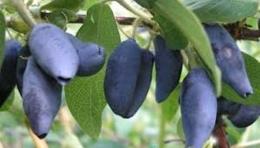
Most novice gardeners, having planted honeysuckle at the dacha, they do not get the desired fruits. This crop is not a particularly capricious plant, but its high yield can be achieved only if certain conditions are met.
Content:
- How to choose the right honeysuckle variety
- Shelf life of berries is a very important factor
- What does productivity depend on?
- How to attract pollinating insects
- Where and how to plant honeysuckle
- Plant pruning
- Edible honeysuckle, planting, care, propagation
- Decorative honeysuckle
- Varieties
- What are the benefits of the plant
What characteristics should you look for when choosing?
A correctly selected variety is one of the first and main conditions that will help ensure high productivity. It is the right variety that is the main key to success.
Planting a randomly acquired honeysuckle seedling, most likely, even when performing certain agrotechnical work, will not give a result at least somewhat similar to that which can be obtained from a recommended high-potential variety.
The choice of a particular plant for planting should first of all be related to personal preferences and how exactly the resulting harvest will be used.
Persons planning to use collected berries fresh, you should pay attention to the most aromatic and excellent-tasting varieties:
- Maria
- Zarechnaya
- Amazon
It is worth considering that their maturation periods do not coincide. Thus, if desired, you can provide yourself and your family with fresh berries for a fairly long period.
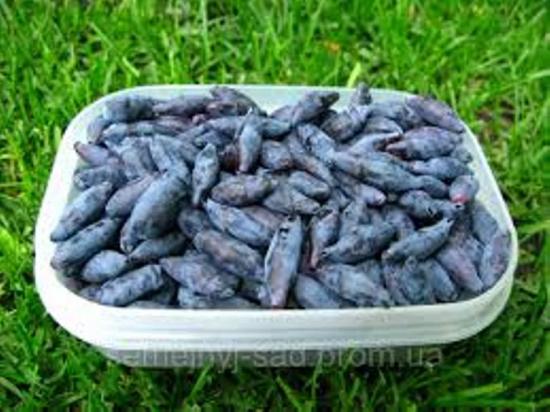
Shelf life of berries is a very important factor
All of the above varieties have a very refined taste and aroma. On a five-point scale, they occupy the highest position among other varieties. However, berries plants have a fairly short shelf life.
Even in a cool place, storage cannot take more than three days. Therefore, all that amount of harvest that was not eaten raw within the agreed period will have to be processed or deep frozen for further consumption in the winter.
You can store fruits of varieties with more acid in taste for a longer time. For example, such as: Gerda and the Blue Spindle. Even after processing, bitterness and sourness will remain. Such taste characteristics evoke positive reviews from many gardeners, but, as they say, there is no arguing about tastes.
What does productivity depend on?
It is also worth noting that honeysuckle, as a culture, is very plastic. Based on this, in one area it is quite possible to plant varieties bred for a specific region and varieties that are intended for planting in other areas. Varieties with other soil and climatic characteristics may surprise you with a better harvest.
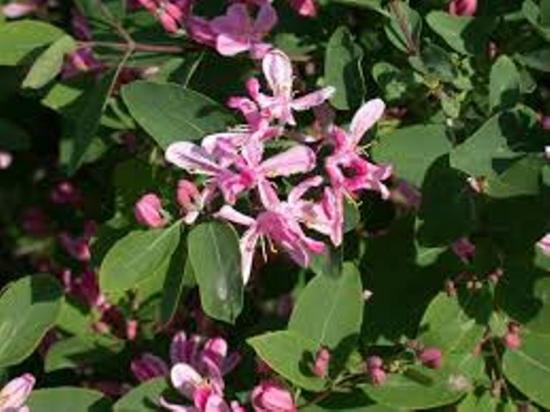
The plant is cross-pollinated, so there will be practically no harvest on plantings with one variety. To obtain a decent harvest, it is necessary to plant not just one bush of three or four species, but at least ten bushes of several species on a personal plot.
Large degree percentage productivity honeysuckle directly depends on the efficiency of fruit formation. Which, quite naturally, is determined by the weather, climatic conditions, and the presence of insects capable of producing high-quality pollination.
Pollination of shrubs is carried out, to a greater extent, by bumblebees and bees. Although it has been noticed that bumblebees do this much better and more efficiently. They are more willing to fly to plantings where a large number of plants are planted.
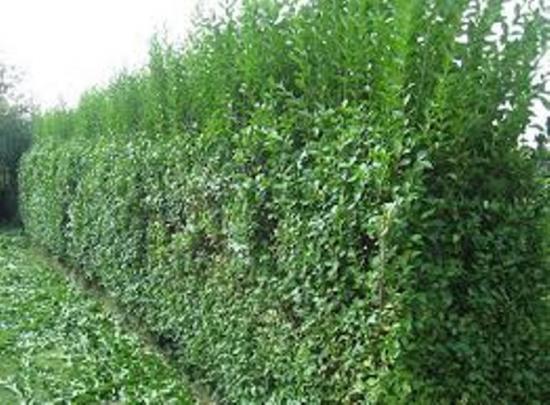
How to attract pollinating insects
It is better to plant honeysuckle bushes not in a row, as for example, it is customary to plant raspberries and currants, but in a group. It would be ideal if, after agreement with neighbors, in all areas close to each other, honeysuckle would be planted in the corners (at the junction of adjacent areas) of the occupied territory. In such cases, a smaller number of bushes can be planted in each plot.
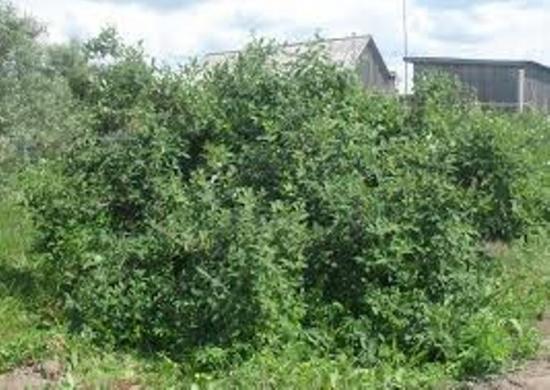
The most effective method for attracting to the territory insects - this is spraying. It is carried out not only in relation to honeysuckle, but also in relation to all other berry crops. Spraying is carried out with the following composition: water 10 liters and 2 tbsp. spoons of honey or sugar. The work is carried out exclusively during flowering.
Efficiency from the use of "Ovary" and "Bud" products
Based on the fact that different berry crops bloom at different times, it is better to spray in several stages. If flowering began at a time when weather conditions leave much to be desired (wind, dampness, low temperature, etc.), then in order to form more good ovaries, the plants must be sprayed with a composition called “Bud” or “Ovary.”
They stimulate ovary formation well.You can find out how to use the drugs by carefully reading the attached instructions or by obtaining detailed advice from a seller in a specialized store.
Where and how to plant honeysuckle
An important factor is the choice of landing site. It should be as open and sunny as possible. It will not be bad if the planting is protected from drafts. For example, by buildings or planting larger trees. Even the slightest shading will have a very negative impact on productivity. This arrangement will have a very depressing effect on the general condition of the plant and the buds responsible for reproduction will develop slowly and poorly.
Based on the fact that the life and fruiting of the bush will continue for 25 years, the optimally acceptable distance in the row between the bushes should be 2 meters, and the row spacing should be at least 2.5 meters.
Pruning honeysuckle
Due attention should be paid to the condition of the crown during planting. The rapid formation of a large number of shoots is a feature and leads, in turn, to excessive crown density. To prevent such problems from arising, every year with the arrival of spring it is necessary to carry out thinning pruning.
In addition, this procedure will greatly facilitate bumblebees’ access to the middle part of the bush for pollination. Failure to prune will result in reduced yield.
Fruit formation will occur exclusively in the peripheral part. Experts recommend starting pruning for thinning only in the fourth year of life. At the beginning of the plant's life, pruning should be done exclusively for sanitary purposes, in other words, removing broken or dried branches.
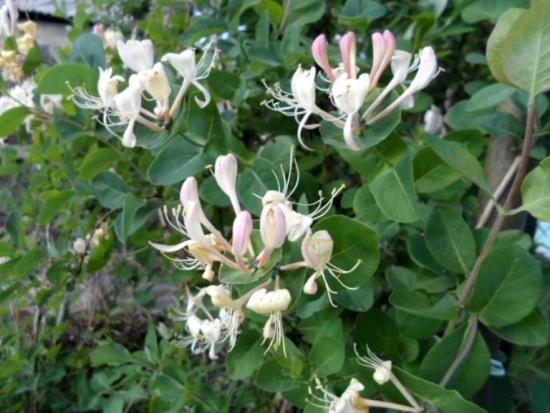
Edible honeysuckle planting, care, propagation
Basically, honeysuckle the plant is not very demanding and can actively grow and bear fruit in any type of soil. But it will be much better for both the plant itself and the harvest if the soil for planting it is breathable and fertile.
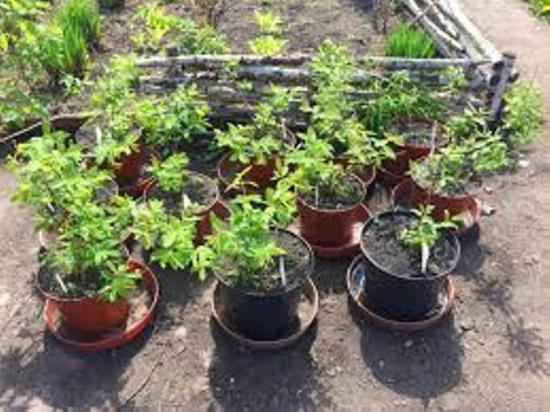
If for some reason it is not possible to create such soil conditions throughout the entire plot, then you can reproduce them at least in the place where you plan to plant shrubs.
Landing
The hole for planting each of the shrubs must be at least 60 cm x 40 cm in size. Having achieved the specified dimensions using a shovel, place on its bottom: one and a half buckets of humus, 1 liter of wood ash, AVA (fertilizer) about 50 g, Agrovitkor - fertilizer with agro-mineral composition, which contains the necessary organisms to combat pathogenic soil elements and which contribute to the rotting of any organic compounds.
Similar preparation of pits for planting is often carried out for growing other fruit and berry crops. In this case, additional components can be: dolomite flour, peat, sand, etc.
Planting bush, the neck of the root is lowered below the soil level by 5 cm, then watered with two buckets of settled water. Mulching with grass or humus is mandatory.
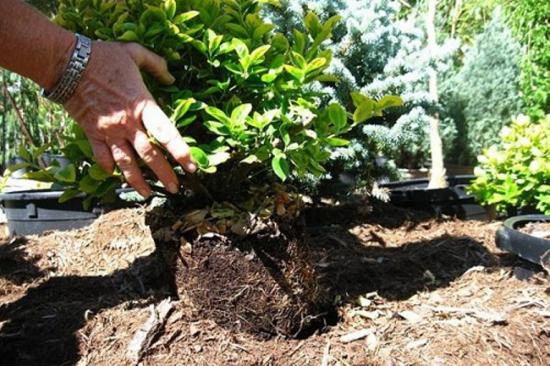
Proper care of honeysuckle
The quality and quantity of honeysuckle fruiting directly depends on air temperature and precipitation during the ripening period. If during the period late spring - early summer there is no rain in the required quantity, then you will have to take care of high-quality and timely watering yourself. After watering, the soil must be mulch.
From the end of spring and almost until the end of summer, shrubs need to be sprayed several times with Baikal EM-1.
During the process of fruit ripening, it is necessary to consider options for protection from feathered berry lovers. This could be either a special net for protection, or a scarecrow or something similar.
Varieties of edible honeysuckle
There are quite a lot of them and they are all famous for their high degree of frost resistance. Most often you can find seedlings of the Nizhny Novgorod variety on sale. Its fruits are quite large and very sweet.
The berries are separated from the root without excess juice release. The variety belongs to the early varieties, but has one drawback: its ripe fruits do not stand on the stem at all, so they must be removed on time, without the slightest delay. Otherwise, the harvest will be lost.
To ensure a high-quality pollination process, it is recommended to plant plants nearby, in one or several areas, not only of different varieties, but also in terms of ripening.
Among the most interesting frost-resistant varieties, we should remember:
- Bakcharsky giant and Cinderella
- Tomichka and Blue Spindle
- Morena and Amphora
When choosing sotra for planting, it is recommended to take into account that caique varieties will be the best pollinators for them.
Decorative honeysuckle and its features
Among the many plants of this species, in addition to fruit-bearing ones, there are often those that are used exclusively as decorative elements. Decorative varieties, for the most part, are climbing, so they are ideal for vertical gardening.
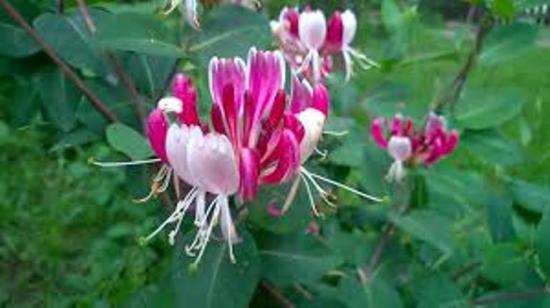
Interesting fact: among all known varieties of honeysuckle, the number of non-bearing ones is much greater.
You also need to remember that non-edible honeysuckle also has fruits. But their consumption as food for both people and animals is strictly prohibited.
The berries contain a huge amount of poison. Popular rumor calls such varieties “wolf berries.” The color of poisonous fruits can range from orange to bright red.
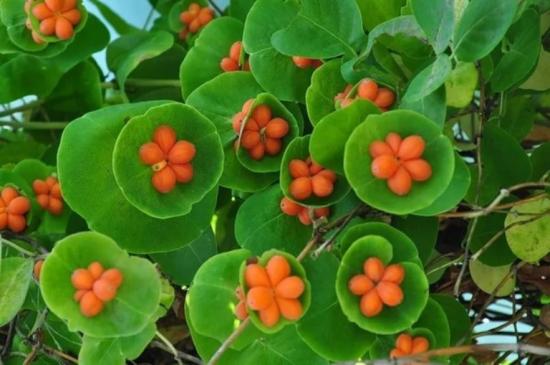
What are the benefits of the plant
The edible fruits of this amazing plant contain a huge amount of substances and microelements that have a beneficial effect on the human body.
Namely:
- vitamins of groups A and B
- polyphenols
- glucose
- acid of organic origin, iodine, rarely found in other more or less accessible products
- calcium and potassium, essential for the normal functioning of the body,
- phosphorus and magnesium, copper
- pectin and tannins
Use in cooking
In addition to its highly decorative value, the shrub, in addition to designers, is quite widely known to doctors and culinary specialists.
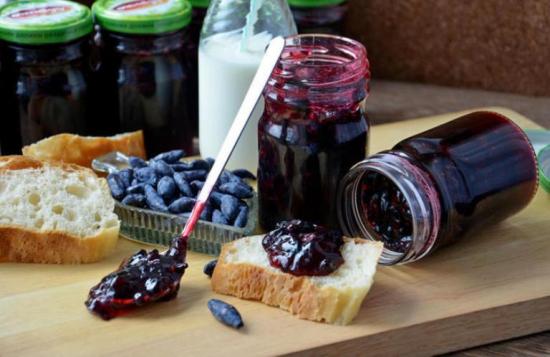
For example, housewives, along with famous world chefs, have been making various preserves, jellies and marmalades based on the recipes of our grandmothers for quite a long time, from which it is then quite possible to make an excellent and original filling for a pie or other baked goods, juices and wines with the rarest aroma and a set of useful components.
The fruits can also be dried or frozen. Their taste and beneficial qualities do not change from this type of processing.
Healing properties
Representatives of both folk and traditional medicine widely use decoctions and infusions of berries, as well as the bark of branches and the root system of edible honeysuckle.
The action of the berries has a positive effect on the condition of the gallbladder and gastrointestinal tract, they are an excellent anti-inflammatory agent, and help to quickly get rid of ulcers and scurvy.
Decoctions of bark and branches, prepared in the correct proportions, are widely used as a diuretic. And infusions made from leaves and flower mass are used as a means to relieve inflammation of various kinds and general disinfection, in the treatment of cold symptoms associated with the throat, and for certain eye diseases.
Freshly squeezed juice from the fruit helps in the treatment of lichen and ulcers on the surface of the skin.
The plant extract is an antioxidant and also a remedy that fights viruses, bacteria and fungal formations.
It is known that this composition can be used for psoriasis and eczema. In this case, it acts as an exfoliant and helps get rid of accumulated dead skin.
For those suffering from rheumatism in the joints, experts recommend taking baths with young branches of the bush pre-soaked in hot water.
It is interesting to know that the climatic conditions in which edible varieties grow greatly influence the quantitative content of their constituents. It has been proven that plants grown in hotter and drier climates have a high content of sugar and acids, coloring and tanning elements.
This in turn affects the taste of the fruit, so they become slightly bitter. But, on the other hand, the acidity of such fruits is much less than that of others.
In berries from bushes growing in climates with sufficient or even excess monthly precipitation, indications of higher acidity and a higher content of vitamins C were found.
Berries collected from plants growing in conditions normal climate, will be rich in monosaccharides, phenolic compounds, ascorbic acid.
In order for the human body to receive maximum benefit from consuming honeysuckle fruits, it is necessary to eat about 100 grams of the product daily for at least three weeks.
The ideal time for this is, of course, the summer, when the berries can be eaten fresh. The option of freezing fruits is not excluded. In winter, they will become an indispensable component that will help bring the body back to normal and replenish its reserves of nutrients.
Even more information about the secrets of growing honeysuckle is in the video:

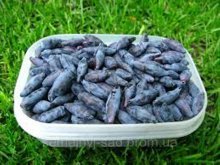
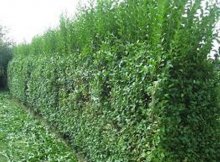
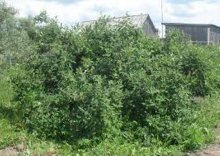
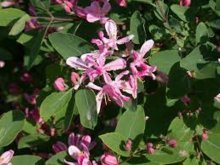
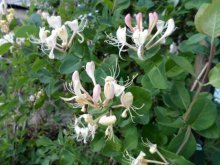
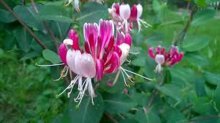
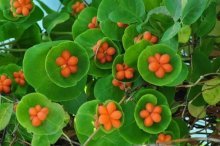
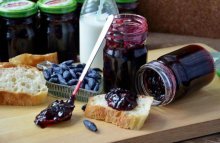
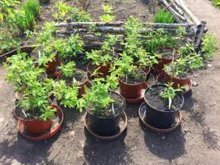
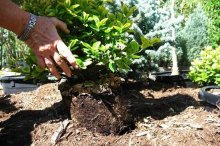
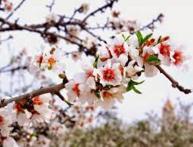
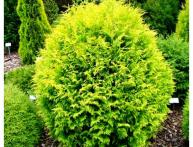
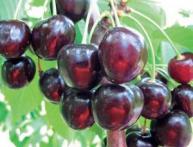
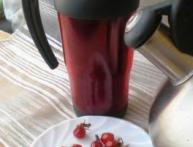
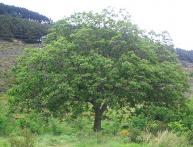
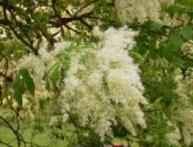
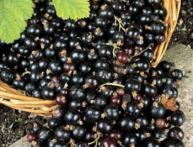
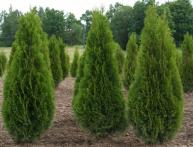
Comments
At our dacha, honeysuckle is represented by three different varieties and is quite a wonderful berry. The very first! There are sweet and two sweet and sour varieties, we freeze them for the winter for compote and just to eat.